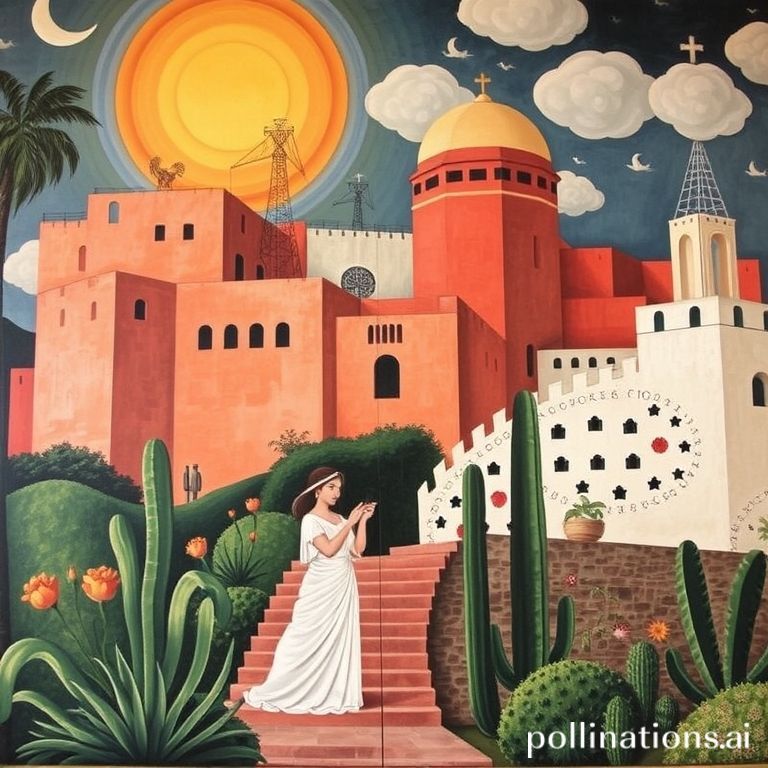Diego Rivera, a name synonymous with Mexican art, left an indelible mark on the world with his powerful and evocative murals. Visiting Mexico and not experiencing his masterpieces would be a missed opportunity. Rivera’s art tells stories – stories of revolution, of the common man, of Mexican history and identity. His murals are not just paintings; they are historical narratives painted on a grand scale, meant to be seen and felt by everyone.
Embarking on a journey to witness Diego Rivera’s masterpieces is a deep dive into the heart of Mexico’s cultural and political landscape. From the bustling streets of Mexico City to the tranquil canals of Xochimilco, Rivera’s murals are strategically placed, inviting locals and tourists alike to engage with his vision. This article will guide you through some of the most significant locations where you can experience the brilliance of Diego Rivera firsthand.
The National Palace: Epic History in Paint
Located in Mexico City’s Zócalo, the National Palace houses Rivera’s most famous and ambitious work: “The History of Mexico.” This sprawling mural cycle depicts the entire history of Mexico, from the pre-Columbian era through the Mexican Revolution and into the 20th century. Spend hours absorbing the intricate details and powerful imagery.
Key Sections to Observe:
- The pre-Hispanic world: Observe the depiction of Aztec life, rituals, and society before the arrival of the Spanish.
- The Conquest: Witness Rivera’s interpretation of the Spanish conquest, highlighting both the brutality and the cultural exchange.
- The Mexican Revolution: This section vividly portrays the struggles, heroes, and ideals of the Revolution.
Palacio de Bellas Artes: Contrasting Visions
The Palacio de Bellas Artes, a stunning architectural masterpiece in itself, is home to Rivera’s “Man, Controller of the Universe.” Originally commissioned for Rockefeller Center in New York City but destroyed due to its political content (it featured Lenin), Rivera recreated it in Mexico City. This mural presents a powerful contrast between capitalism and socialism, showcasing Rivera’s strong political convictions.
Comparing the Visions:
- Capitalism vs. Socialism: Analyze how Rivera visually represents the contrasting ideologies.
- Technological Advancement: Note the depiction of scientific progress and its potential for both good and evil.
- The Artist’s Message: Consider Rivera’s intended message about the role of humanity in shaping the future.
The Diego Rivera Mural Museum: A Dedicated Space
Created specifically to house Rivera’s “Dream of a Sunday Afternoon in Alameda Central Park,” this museum provides an intimate setting to appreciate this iconic mural. The painting portrays a who’s who of Mexican history, gathered in Alameda Central Park. From Frida Kahlo to Benito Juárez, the mural offers a glimpse into Mexico’s past and present.
Decoding the Characters:
- Frida Kahlo: Identify Frida Kahlo and consider her significance in Mexican art and culture.
- Benito Juárez: Recognize Benito Juárez, a pivotal figure in Mexican history.
- Other Historical Figures: Research the other prominent figures depicted in the mural to gain a deeper understanding of Mexican history.
Secretaría de Educación Pública (SEP): A Working-Class Epic
Located within the Ministry of Public Education, this complex houses a vast collection of Rivera’s murals that focus on the daily lives and struggles of the Mexican working class. These murals depict scenes of labor, education, and celebration, reflecting Rivera’s commitment to social justice.
Themes of the Working Class:
- Labor and Industry: Note the depictions of various trades and industries that were vital to Mexico’s economy.
- Education and Literacy: Appreciate the emphasis on the importance of education for the working class.
- Celebration and Community: Observe the scenes of communal gatherings and cultural traditions.
Anahuacalli Museum: Rivera’s Architectural Vision
While not strictly a mural location, the Anahuacalli Museum, designed by Diego Rivera himself, provides invaluable insight into his artistic vision. This unique museum houses Rivera’s collection of pre-Columbian art, showcasing his deep respect for Mexico’s indigenous heritage. The building itself is a work of art, reflecting Rivera’s architectural sensibilities.
Conclusion
Visiting Diego Rivera’s murals is more than just sightseeing; it’s an immersive experience that connects you to the soul of Mexico. His art provides a window into the nation’s history, its struggles, and its aspirations. By exploring these locations, you gain a profound appreciation for Rivera’s genius and his enduring legacy. So, plan your itinerary, prepare to be moved, and embark on a journey through the vibrant world of Diego Rivera.
Ready to discover more about Mexico’s rich culture? Check out our other articles on art, history, and travel!
IMAGE: A wide-angle shot of Diego Rivera’s “The History of Mexico” mural in the National Palace, Mexico City. The mural is brightly colored and filled with detailed figures depicting various scenes from Mexican history. Sunlight streams in from a nearby window, illuminating the artwork. The overall mood is awe-inspiring and historical. The style is realistic and vibrant.


